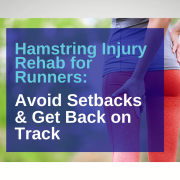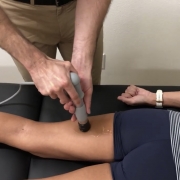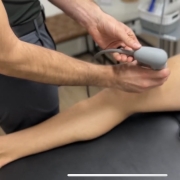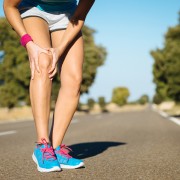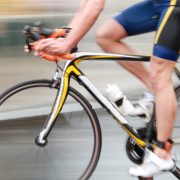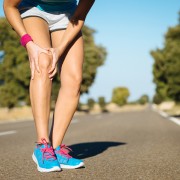High Hamstring Tendinopathy Treatment
/in Knee Pain, running injury, Shockwave Therapy, Shockwave treatment, Sports Injury/by Dr. Travis RoseHigh hamstring tendinopathy is a condition that affects many different athletes. This type of injury is usually a result of repetitive strain, and affects many running athletes. Track running athletes, particularly hurdlers, are susceptible to high hamstring tendinopathy due to the large forceful range of motion required. Endurance runners are also susceptible due to the high volume of contractions the hamstring muscles undergo during training and racing. Usual treatment for high hamstring tendinopathy involve massage, Active Release Technique, Graston Technique, eccentric loading exercises (Nordic hamstring curls), and core strengthening.
Shockwave Therapy for High Hamstring Tendinopathy
In stubborn cases of high hamstring tendinopathy, we have been having great success with shockwave therapy. High hamstring tendinopathy treatment with shockwave therapy involves using shockwaves to stimulate a healing response at the affected hamstring tendon. Shockwave therapy has been shown to increase blood supply, activate dormant stem cells, break down trigger points, and loosen up scar tissue/calcifications at the injured site.
In chronic tendinopathy, the affected tendon has poor blood supply and physically starts deteriorating. The shockwaves stimulate the body’s healing response to the area to regenerate the damaged tendon. With weekly treatments, the beneficial inflammation/healing response reaches its peak to repair the damaged tissue.
Watch a shockwave treatment with one of our marathon runners who was dealing with nagging high hamstring tendinopathy.
After 4-8 weeks, most patients experience complete resolution of their high hamstring tendinopathy. Most importantly, patients do not need to avoid training while you are undergoing shockwave therapy treatments. In fact, it is important to load the hamstring with targeted strength exercises. Eccentric loading exercises such the Nordic hamstring curl are very effective at targeting the hamstrings. Even simple isometric exercises are enough to stimulate the tendon while it undergoes shockwave therapy. If you are interested in starting your shockwave therapy for high hamstring tendinopathy, schedule here. We also treat various other tendinopathies with shockwave therapy.
Shockwave Therapy for Knee Pain
/in Knee Pain, Shockwave Therapy, Shockwave treatment/by Dr. Travis RoseShockwave therapy for knee pain is a very effective and efficient way to help manage painful knee symptoms. Many people experience knee pain due to patellofemoral pain syndrome, patellar tendonitis, knee arthritis, MCL sprain, pes anserine bursitis, etc. Shockwave therapy delivers high energy sounds waves into the injured tissues which causes an inflammatory response from the body. This inflammation produced by the body via the shockwaves helps the injured area regenerate, and increases the formation of blood vessels. This improvement in blood flow to the area allows for oxygen, nutrients, etc. to be delivered to the injured area.
Check out our video below and see how shockwave is applied to a painful knee. We also have successfully treated plantar fasciitis, tennis elbow, and different types of shoulder pain.
Shockwave therapy also has an analgesic effect. The acoustic waves disperse pain mediating neurotransmitters in the area. This means that the pain signals in the nerves are not able to send the signal to our spinal cord/brain. With less pain, we can then challenge the injured area more effectively with rehab exercises which will ultimately strengthen and bolster the injured area.
Shockwave After Knee Replacement Surgery
We have also had success with using shockwave therapy for patients who have had a previous knee replacement. Scar tissue, around the surgical site can cause pain and mobility issues which shockwave can improve. Shockwave therapy will help with the pain with the knee replacement and allow for exercise to help support the replaced knee joint.
Loading with Shockwave Therapy for Knee Pain
With all shockwave therapy, we utilize loading exercises which result in further strengthening of the injured area. This results in further improvement in the injured structures and build resiliency. For knee pain, it is important to load the quadriceps tendon, patellar tendon, and other muscles/tendons that surround the knee. As an example patellar tendon injuries have poor blood supply and the tendon is usually weakened to a degree. Shockwave for patellar tendinitis helps promote further blood flow, and beneficial inflammation while loading exercises build resiliency.
If you are dealing with knee pain and are looking for knee pain relief in San Diego, please contact us. We are happy to answer any questions and help with you getting back to activity pain free. Our San Diego Shockwave clinic is located in Mission Valley, San Diego.
IT Band Syndrome: 5 Training Tips
/in Knee Pain, running form, running injury/by adminTrying to run with IT band syndrome is very frustrating. Often times, a runner can run with IT band syndrome for a certain amount of time until the pain comes back or becomes so unbearable that they have to limp home from their run. Our chiropractors treat runners who run with IT band syndrome as well as other running related injuries.
Top 5 training tips for IT Band Syndrome
Decrease volume– IT band syndrome is worse with a high number of repetitions. When you run with IT band syndrome, try reducing your volume by 50% to start off.
Avoid down hill running– Down hill running causes more force into the quadriceps and less activation from the glutes. The glutes play a very important role in knee stability. Without proper glute activation, a run with IT band syndrome through hills will make things worse. Stick to flat surfaces.
Increase intensity– Volume is the main issue when dealing with It band syndrome. With the decreased run volume, it is ok to get more out of those shorter workouts. Adding some intensity will help keep fitness levels high for training.
Run/Walk- This technique will help you keep the repetitions low. If you have tried to run with IT band syndrome for a long time without success, this option may be a good way to start back into running.
Uneven Surface running– Running on concrete or other flat surfaces hits the same muscles in the same direction over and over. If you run on a trail that has varying terrain (and limited ups and downs) this will cause the hip muscles to work more in different orientations. This will help build overall strength to support the hip and the knee.
These tips can help manage and allow you to run until the symptoms improve and you are pain free. These training modifications combined with manual therapy and exercise like our running chiropractors in San Diego perform, can help get you out of pain even faster. Our office is conveniently located in Mission Valley, San Diego.
Both Dr. Travis Rose, DC CCSP and Dr. Kevin Rose DC DACBSP are avid triathletes and runners. As experienced triathletes, Dr. Travis and Kevin Rose understand the frustrations of running injuries and try their absolute best to get you better, faster!
New Methods in Treating IT Band Syndrome
/in Knee Pain, running injury, Sports Injury/by adminIT band syndrome remains a stubborn condition that our chiropractors treat at our office in Mission Valley, San Diego. Runners, triathletes, and cyclists are the main groups of people who we treat for this condition. We previously posted treatment recommendations for IT band syndrome (found Iliotibial Band Syndrome) but wanted to update the information regarding treatment. The previous post still highlights relevant treatment advice in terms of research based treatment. Continue below to see the most recent types of treatment our San Diego chiropractors utilizes to best treat IT band syndrome.
Do you truly have IT band syndrome?
Many patients self diagnose their knee pain as IT band syndrome. They may be correct but true IT band syndrome is characterized by outside (lateral) knee pain right at the bony attachment of the IT band. It is often worse with repetitive movements such as running, walking, hiking, and cycling.
There are many cases that we have seen where the patient is experiencing general knee pain and were diagnosed with IT band syndrome. After our chiropractor evaluates the knee pain, it is often found that the person is experiencing knee pain due to muscle imbalances between the front of the thigh and back of the thigh. The pain and discomfort is often due to very tight and sore quadricep muscles. IT band syndrome is diagnosed because the IT band itself is found superficial to the outside quadricep muscle.
These patients are categorized as “quad dominant” and our San Diego Chiropractor works on the tight/sore quadricep muscles while strengthening the back thigh muscles, namely the gluteus maximus and hamstrings. Along with general strengthening and stretching, the patient must be taught how to use the glute muscles and hamstrings more during their activity.
New Treatment Approaches
We have had a lot of success using various types of myofascial release. Our San Diego Chiropractors have been trained in Active Release Technique and Graston Technique. Cupping is another therapy that has been used to help increase mobility between muscle fibers. Using motion with different types of myofascial techniques is especially helpful for treating IT band syndrome in runners, cyclists, and triathletes. The movement with myofascial work helps create mobility between layers of muscle/fascial tissue that often gets “bound up” with the constant repetitive stress from the sports mentioned previously. Take a look at the videos demonstrating IT band syndrome treatment:
Cupping used during athletic movements to decrease tissue compression and increase blood flow
Active Release Techique applied to the quadricep and IT Band
Strengthening the Hips for IT Band Syndrome
The previous article (found Here Iliotibial Band Syndrome) we wrote discussed several exercises that are still beneficial for IT band syndrome. We are finding even more success with more aggressive glute and hamstring exercises to help stabilize the hip and knee. Below is one of our favorite hip extension exercises. You can perform it one side at a time to make sure you are getting the most out of each hip. Our San Diego chiropractor treats many running injuries and will also assess different muscles groups to help establish proper running form.
If you are experiencing IT band syndrome, it is important to get evaluated by a sports chiropractor. Our San Diego Chiropractors work with all types of athletes. Each treatment is unique to the individual but likely includes some form of myofascial release, stretching, and strength training. Our office is conveniently located in Mission Valley, San Diego.
Cycling Knee Pain Treatment
/in cycling injury, Knee Pain, Sports Injury/by adminMost cyclists at one point or another experience knee pain when riding their bike. There are many types of cycling knee pain and many different causes. In majority of cases, knee pain from cycling is due to overuse of the muscles/tendons around the knee joint. The complicating factor is the bike itself and how you are fit on that bike. A dialed in bike fit will allow your body to absorb the forces that hard cycling produces. If your knee joint, is working in a strained position, the muscles and tendons will eventually fail once a certain volume and/or intensity is reached during training. Forced time off will occur, the cyclist will train pain free until that tissue threshold is hit, and then knee pain occurs again. Frustrating! Below you will find the most common causes of knee pain in cycling.
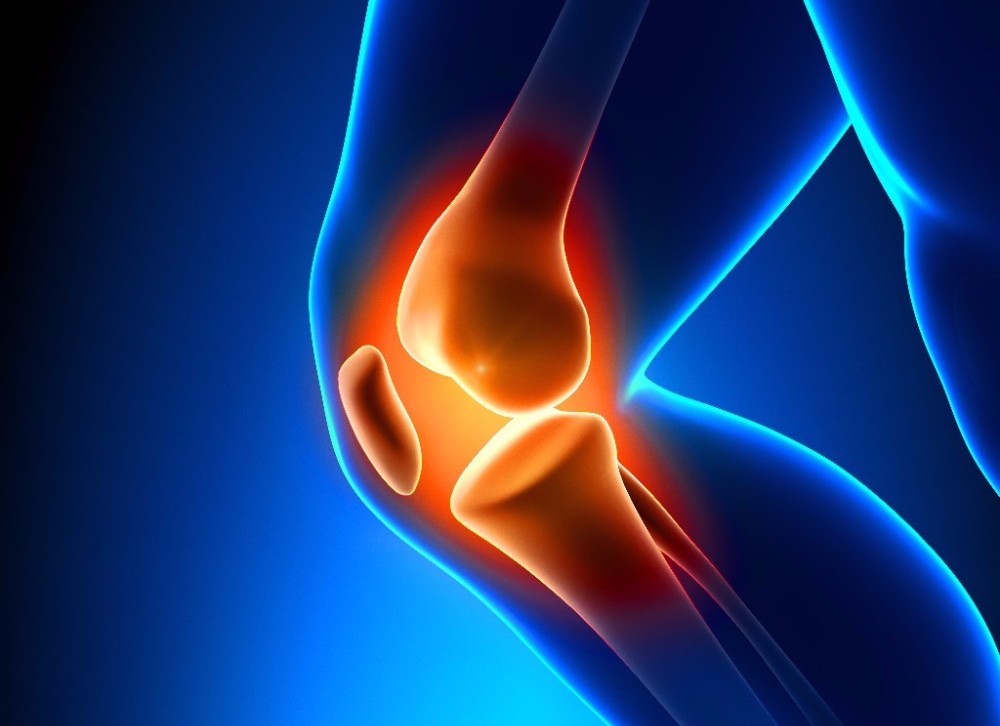
Anterior knee pain
- Patellar tendonitis most common
- See our post here on patellar tendonitis
- Chondromalacia
- Fat pad impingement
- Bike fit suggestion: increase saddle height
- Advanced with evaluation of foot: shoe insert, cleat wedges
Medial knee pain
- Pes anserine bursitis
- MCL/knee capsule irritation
- Bike fit suggestion: move cleats outward
- Advanced with evaluation of foot: shoe insert, cleat wedges
Lateral knee pain
- Iliotibial band syndrome it band syndrome
- Hamstring strain (biceps femoris)
- Bike fit suggestion: lower saddle height, move clears inward (toward bike)
Posterior knee pain
- Hamstring tendonitis
- Hamstring train
- Calf strain
- Bike fit suggestion: Lower saddle height
Evaluation of Cycling Knee Pain
Evaluation begins with a thorough history, including details on your personal history of cycling, and bike fit. Our sports chiropractor will take you through various range of motion, orthopedic, functional movement, and strength/endurance testing. After the evaluation, a working diagnosis is developed and treatment begins.
Treatment for Cycling Knee Pain
Most cases of knee pain from cycling improve with a combination of manual therapies including Active Release Technique, Graston Technique, and joint mobilization. A individual exercise routine will be prescribed as well to strengthen/stretch the affected tissues to reduce pain and dysfunction quickly. Our cycling doctor will help construct a cycling training plan to get back to riding pain free; some bike fit suggestions may be necessary.
Schedule today to get your knee pain properly diagnosed at our Mission Valley, San Diego office. Both Dr. Travis Rose, DC CCSP and Dr. Kevin Rose, DC DACBSP are trained to treat cycling injuries and are both avid cyclists and triathletes themselves. Dr. Travis Rose, DC CCSP has additional training in Bike Fit analysis for health care providers.
Patellar Tendonitis and Knee Pain
/in Knee Pain, running injury, Sports Injury/by adminThe patellar tendon runs from the bottom point of the patella (knee cap) and runs down to the top of the tibia (shin bone). It acts as a pulley to lift the leg upward into extension when the quadricep muscles contract. Leg extension is important in many sports and day to day activities; squatting, walking up and down stairs, getting in and out of cars, etc.
When the quadriceps become overused, excessive amount of load occurs at the patellar tendon and patellar tendonitis begins to develop.
What are the Symptoms of Patellar Tendonitis?
Patellar tendonitis is characterized by pain and possibly inflammation along the patellar tendon. Early stages of patellar tendinitis tends to cause pain after exercise/aggravating activity, and then goes away hours after the activity; it may also be felt at the start exercise but feels better as exercise continues. As the condition progresses, pain may be felt before, during, and then is worse after exercise. If it gets ignored and an athlete tries to push through the pain, the tendon will actually start to deteriorate resulting in patellar tendinosis.
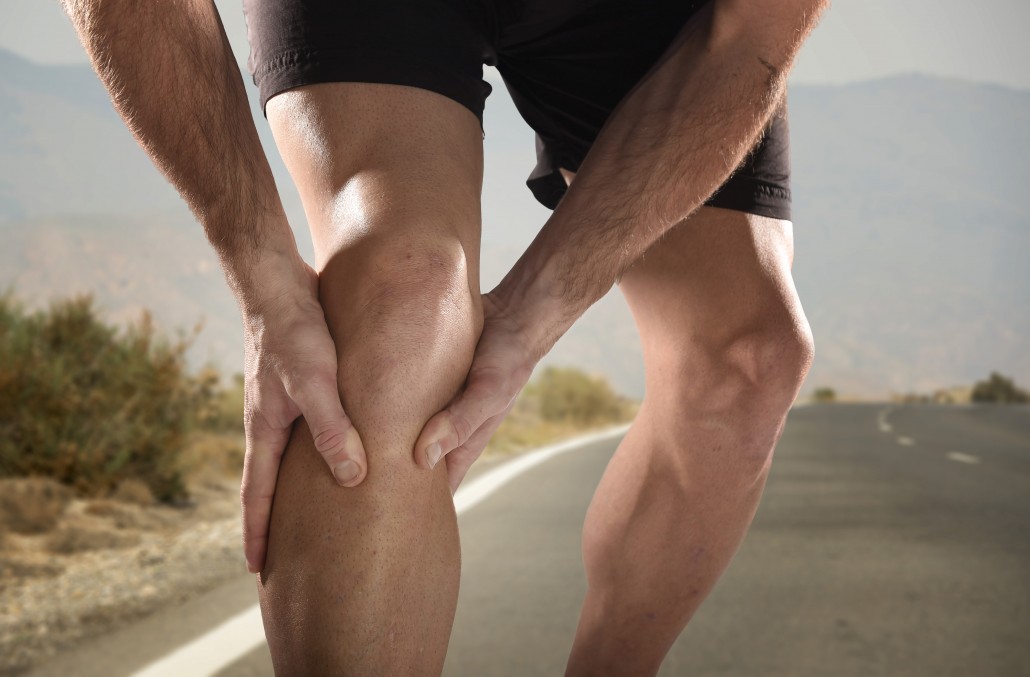
Who are at risk?
Athletes who perform repetitive jumping and leg bending are at risk to develop patellar tendonitis. Basketball players, CrossFit athletes, volleyball players, runners, cyclists, backpackers/hikers, triathletes, are all at a higher risk due to the potential overuse of the quadricep muscles. Specifically for running and hiking, performing lots of down hill routes will increase the likelihood of developing patellar tendonitis.
Evaluation
In most cases, patellar tendinitis can be diagnosed with a thorough history of the injury and brief physical exam. In some cases, imaging such as a X-ray or MRI may be necessary to rule out other conditions such as meniscus injury, patella alta, chondromalacia, arthritis, etc. Check out our blog here for other causes of anterior knee pain.
Treatment for Patellar Tendonitis in San Diego
For acute pain relief, Active Release Technique, Graston Technique, stretching, foam rolling, and training modification are essential. As the patient improves, eccentric exercises are prescribed to repair the patellar tendon. This helps strengthen tendon fibers to resist future load from activity. Eccentric loading for patellar tendinosis is even more important as this restarts the inflammatory process at the tendon so the tendon can heal.
Stop dealing with patellar tendinitis on your own. Schedule today to get evaluated by our sports chiropractors located in Mission Valley, San Diego. We have helped countless athletes overcome knee pain with our targeted approach.
PEAK FORM NEWSLETTER SIGN UP
Our Office


